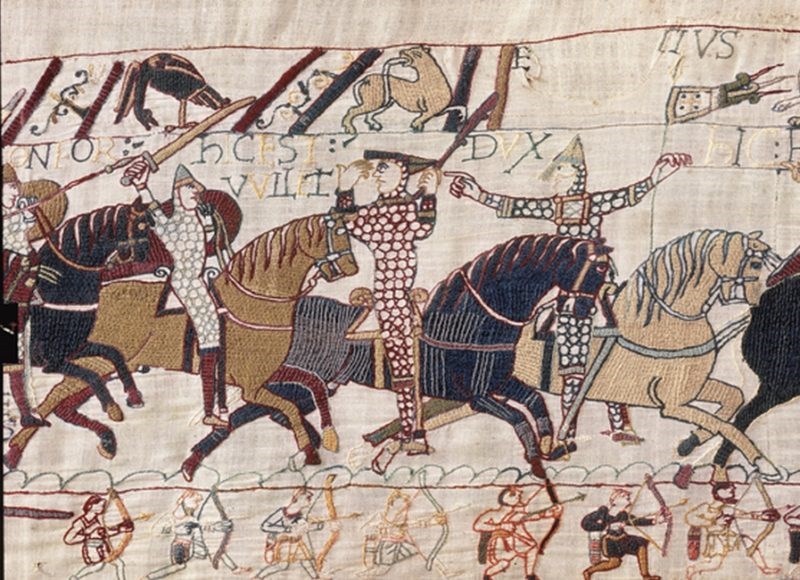When the subject is history, most timelines are two-dimensional. They’re composed of one or more lines, along which are strung various events, often relating to politics, war, art, science, literature – the momentous events, in short. But history timelines of this sort are not only two-dimensional, they’re devoid of spirit. You don’t sense humanity pulsing through them, you don’t get an impression of lives lived, 24 hours a day, seven days a week, when you see only the major markers of history.
Timelines, as we know them today, are not like the eleventh-century Bayeux Tapestry, in which 75 scenes depict the conquest of England by William, Duke of Normandy, in 1066. This kind of record of history is teeming with action, with the colour of life, it gives the event a three-dimensionality.
To get the sense of witnessing something extraordinary, the sense of being there, you need details that speak to you, that draw you in. The best kind of details are the ones supplied by whoever was actually there, at the scene – not necessarily the super-heroes or super-villains who, according to history books, shaped the events, but the ordinary folk who were involved and affected by what happened. Something like this has recently been done in “As We Were,” by the historians David Hargreaves and Margaret-Louise O’Keeffe for the years (week-by-week) of World War One Their sources are the letters and diaries of the men and women who had firsthand experience of that conflict. Spilling out of these private accounts are hope, pride, love, bewilderment, fear, anger, consternation, frustration – the full range of emotions that gripped them.
For about a year and a half, we, too, have been witnessing and living through something extraordinary – a war of a different sort, a war in which the enemy is a virus, a virus that works hard to survive, that fights back by frequently mutating. The disease caused by this newly discovered coronavirus has been named Covid-19. It’s affected, in one way or another, nearly everyone on earth. It’s affected nearly all our activities and the world’s activities. It’s changed what we do and how we do it. We have countless graphs to measure its progression and the devastation it’s caused. There is no dearth of statistics for interpretations and prognostications.
When future generations learn about the Covid-19 pandemic, they might well see timelines filled with numbers and data that will teach them about the scale of the disease. But will this kind of statistical information give them a sense of what we’re going through right now? I don’t think so. They need to read about how we, the ordinary people, not the heads of state or politicians or other decision-makers, are reacting, how we’re coping.
There’s a problem, however. Most of our methods of communication – text messages, emails, phone calls – are ephemeral.
The solution? Keep a diary, scribble down your thoughts and feelings, even if only with telegraphic brevity. It’ll be a gold mine for your great-great-grandchildren – and for others.
Sabine Eiche is a local writer and art historian with a PhD from Princeton University. She is passionately involved in preserving the environment and protecting nature. Her columns deal with a broad range of topics and often include the history (etymology) of words in order to shed extra light on the subject.



